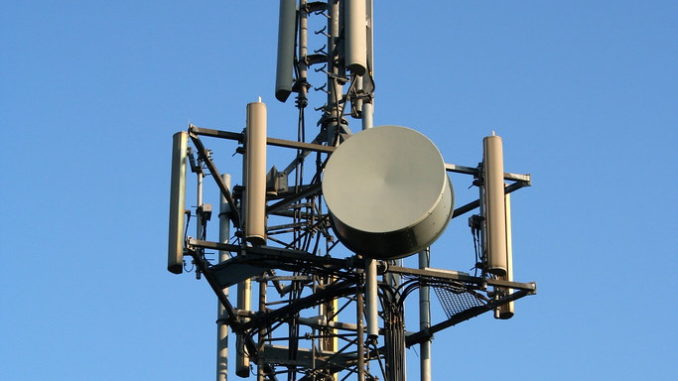….As 4G dominates, 5G gains traction
By Chinenye Anuforo
[email protected]
Nigeria’s mobile subscriber base and data consumption are expanding rapidly, but poor network quality continues to hinder user experience. While 4G remains the dominant technology and 5G is gradually gaining traction, service performance still falls below global standards.
The above position was highlighted in a new report by Opensignal’s Global.
Nonetheless, the latest industry statistics on the Nigerian Communications Commission (NCC) website for March 2025 revealed a rebound in active mobile subscriptions and data usage, even as Opensignal’s Global Network Excellence Index placed the county’s network quality at a low rank globally.
Broadband internet subscriptions continued their upward trajectory, reaching 101.8 million in March 2025. This represents a healthy month-on-month (MoM) increase of 1.5 million from February’s 100.3 million, marking the sixth consecutive month of growth in broadband connections. This expansion is largely fueled by the consistent recovery in active mobile subscriptions, which form the backbone of Nigeria’s broadband infrastructure.
Monthly data consumption also saw a strong rebound in March 2025, increasing by 11.5% to 995.88 terabytes (TB). While slightly below the record high of over one exabyte (1,000,930.6 TB) observed in January, this significant recovery showed that subscribers are gradually adapting to the new tariff regime, with robust demand-side resilience driving consumption.
Overall active mobile subscriptions surged, pushing the total active lines from 169.32 million in February to 172.71 million in March 2025. This growth also boosted Nigeria’s teledensity from 78.10% to 79.67%.
Within this growth, 4G technology continued to be the dominant network in connecting Nigerians to the internet. Latest available data for early 2025 indicated that 4G accounts for approximately 48.82% of all connections, leading the way in mobile internet access. This highlighted the widespread adoption and expansion of 4G networks across the country by telecom operators.
Nigeria’s nascent 5G network is also making steady progress. As of March 2025, 5G subscriptions have increased to an estimated 2.70% of total active telephone users, equating to approximately 4.66 million subscribers. This marked a 0.16% rise from the beginning of the year, showcasing growing interest and deployment of the latest generation network by operators like MTN, Airtel, and Mafab Communications.
Meanwhile, 3G connections continue to play a role, currently accounting for about 8.40% of subscriptions. Older 2G technology still holds a significant portion of the market at around 40%, particularly in areas where advanced network infrastructure is yet to be fully deployed.
Among the major GSM network operators, MTN Nigeria led the subscriber surge with a 1.2 million MoM increase, bringing its subscriber base to 90.5 million and commanding approximately 52.5% of the total market share. Airtel and Globacom also recorded marginal MoM increases, adding about 392,000 and 188,000 lines respectively, to reach 58.3 million and 20.7 million subscribers. 9mobile maintained a flat month-on-month growth.
Despite the growth in subscriptions and data usage, mobile network quality, according to Opensignal’s Global Network Excellence Index, based on data collected between January 1 and March 31, 2025, has ranked 105th out of 137 countries. This position remains unchanged from February and for the entire first quarter of 2025, lagging significantly behind its African peers like South Africa, which rose to 60th place globally.
The Opensignal index evaluates countries across three core pillars: 4G/5G availability, consistent network support for demanding applications, and 4G and 5G download speeds. While Nigeria ranked 100th in terms of 4G/5G availability, its quality rating stood at a significantly lower 121st. For 4G download speed, the country ranked 120th, while its 5G speed was rated 46th, a relatively better position likely due to fewer countries having deployed the technology at scale.
Principal Analyst at Opensignal, Andrey Popov, noted that while most countries are seeing gains in users’ ability to access modern networks, low-income markets are falling behind. He suggested that the slight drop in 4G/5G availability in some regions could mean users are spending more time on 2G/3G networks or facing signal loss.
In contrast to global trends, China’s three major mobile players racked up nearly 1.05 billion 5G network subscribers in March. Market leader China Mobile registered an 18.6% year-on-year growth to 578 million 5G users. China Telecom reported 266.2 million 5G network subscribers, and China Unicom ended the quarter with 203.8 million 5G network subs. This massive scale of 5G adoption in China highlights the significant gap in network development and usage compared to emerging markets like Nigeria.
Broadband penetration remains below the ambitious 70% target outlined in the 2020-2025 Nigerian National Broadband Plan. Structural challenges such as exchange rate depreciation, persistent inflation, and high operating costs continue to impact telecom operators’ margins, potentially hindering significant new investments in expanding high-quality 4G and 5G infrastructure.
The growth observed in the sector was largely attributed to subscriber base recovery and robust demand-side resilience rather than substantial new capital expenditure specifically for broad network upgrades. Rural areas, in particular, continue to face limited high-speed internet coverage, indicating a disproportionate concentration of 4G and 5G growth in urban centers.
Industry players have consistently highlighted bottlenecks such as delays in right-of-way (RoW) approvals, multiple taxation, and vandalism of telecom assets as persistent impediments to efficient service delivery and further expansion of advanced network technologies. While the recent tariff hike is expected to boost earnings for operators, its long-term effect on consumer affordability and demand, especially for higher data consumption on 4G and 5G networks, remains a key consideration.
Commenting on the recent statistics, industry expert Jude Awe stated, “The NCC’s March 2025 report and the Opensignal index collectively underscored the ongoing dynamism of telecommunications sector, showcasing its ability to expand and adapt even amidst economic pressures. However, addressing long-standing infrastructural and regulatory challenges, particularly to improve overall network quality and extend the reach of 4G and 5G services nationwide, will be crucial for achieving the nation’s ambitious digital inclusion goals and bridging the gap with global leaders in network excellence.”

